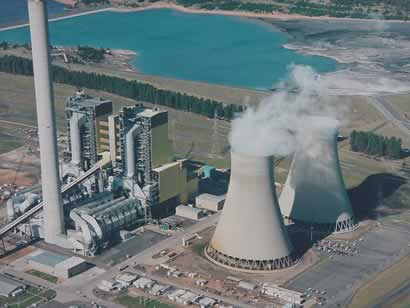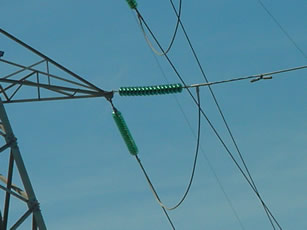
At Gippsland in Victoria, Australia, brown coal is used to heat water into super hot steam. This steam is then used to drive huge turbines that turn the generators to create electrical energy at 12,000 volts. The steam is then condensed back into water by huge cooling towers, pictured on the left.
Brown coal is not as good a fuel as black coal. It has a high water content and must first be dried before it can be used in the burners to heat the water. However, brown coal is abundant and can be found just one metre below the surface. Another advantage is that it has a low sulfur content. This reduces the amount of sulfur dioxide that is produced when the coal is burnt. Sulfur dioxide is a pollutant that mixes with water in the atmosphere to produce acid rain.


